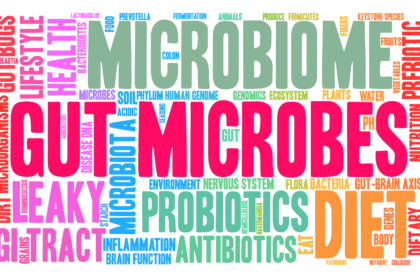One in 133 Americans across all races, genders, and ages suffer from celiac disease, and 83% of them don’t know it. Despite these statistics, there’s been a gluten-free explosion. In 2019, gluten-free product sales had grown from $580 million in 2004 to $4.3 billion, and it’s estimated to reach $7.5 billion by 2027. Here’s an explanation of the disease, the trend, and who’s at risk.
What is Gluten?
Gluten is a general name for the proteins in wheat (e.g., wheat berries, durum, emmer, semolina, spelt, farro, graham Kamut®, einkorn), barley, and rye, and triticale (a cross between wheat and rye).
Gluten gives foods their “stretchability” (think tossing pizza dough) and helps foods, like breads, cakes, and pastas hold their shape (acts like a glue). So when you bake with gluten-free flours, you have to make some ingredient adjustments to help keep your product from falling apart and crumbling.
What is Celiac Disease?
Celiac disease is a condition in which the immune system is abnormally sensitive to gluten (protein found in wheat, rye, barley). It is a serious autoimmune disorder. Eating a food containing gluten causes the body to produce an immune response that attacks the small intestines and other tissues and organs.
Note: People that have a gluten-intolerance or sensitivity don’t have an auto-immune response to gluten, but may have symptoms.

The lining of a healthy intestine: A healthy intestine has small finger-like structures called “villi” (pronounced VIL-liyh) inside the small intestine. The villi trap the food you eat, so the vitamins, minerals, and other nutrients can be absorbed into your body.
A celiac-diseased intestine: Immune response attacks on the small intestine cause “villous atrophy”, where the villi are ‘flattened’ and damaged by celiac disease, which makes it impossible to absorb nutrients, resulting in malnourishment. If a gluten-free diet isn’t strictly followed, the immune system becomes overactive causing chronic systemic inflammation, which leads to chronic disease.
Areas Affected By Celiac Disease
When celiac disease goes undiagnosed or is misdiagnosed, it can have serious health consequences. The average time a person waits to be correctly diagnosed in the U.S. is 6-10 years.
There are over 300 known symptoms associated with celiac disease, which makes an accurate diagnosis difficult and often delayed. Symptoms include:
- BRAIN: Headache, dizziness, migraines, depression
- MOUTH: Ulcer and tooth enamel erosion
- JOINTS / MUSCLES: Pain, swelling, chronic fatigue
- BONES: Osteoporosis
- STOMACH: Pain and nausea
- INTESTINAL: Diarrhea, bloating, constipation
- SKIN: Brittle nails, acne or eczema
- FEMALE ORGANS: Infertility (1 in 6 women with infertility have undiagnosed celiac disease)
How Celiac Disease Is Diagnosed
- Endoscopy with duodenal (intestinal) biopsy showing villous atrophy (the gold standard).
- Antibody screening (tTG-IgA Test) — a simple blood test.
- A genetic test (sometimes used).
Note: Celiac disease in older adults is often misdiagnosed as some type of gastrointestinal distress, which is common in the elderly.
A Sick Gut (Intestine) Has Serious Consequences
- 70% of the body’s immune system is in your digestive tract.
- Your gut wall houses 70% of the cells that make up your immune system.
- A healthy gut promotes a healthy immune system.
Who’s At Risk
- Celiac disease tends to run in families.
- It can strike at any age. You can eat gluten for most of your life and never get sick, but all of a sudden, you can’t digest gluten.
- Today, the majority of celiac patients that have the gene have “latent disease” (they have the gene, but do not show symptoms yet).
- In people who are genetically prone to celiac, a change in the composition of the gut bacteria could trigger the autoimmune response. This could be the cause of the celiac epidemic.
- Surgery, antibiotics, an infection, or stress (e.g., death of a close family member, friend, or spouse) can change the bacterial composition.
The Treatment
Currently, removing gluten from the diet is the only treatment for celiac disease.
The Trend
- Health trends, e.g., weight management and “clean” eating (less processed foods), have led to the gluten-free trend.
- Gluten-free for weight loss became a trendy weight loss diet when Lady Gaga announced she was maintaining a strict gluten-free diet to shed 10 pounds.
- There is NO scientific evidence that going gluten-free causes weight loss.
- Many people merely claimed they felt better after giving up wheat and diagnosed themselves as gluten-intolerant.
The Downside of a Gluten-Free Diet
Eliminating gluten is not recommended unless you have celiac disease. A gluten-free diet eliminates whole grain foods that are an excellent source of B vitamins and are often substituted with rice.
- B vitamin intake is lower.
- Levels of arsenic in the blood are higher in those following a gluten-free diet, due to the high intake of rice (rice flour).

![]() Karen’s Fit Tip: If you have any of the signs and symptoms of celiac disease, see a doctor immediately to rule out celiac disease, which often goes undiagnosed, and to prevent the potential for cell and organ damage.
Karen’s Fit Tip: If you have any of the signs and symptoms of celiac disease, see a doctor immediately to rule out celiac disease, which often goes undiagnosed, and to prevent the potential for cell and organ damage.





